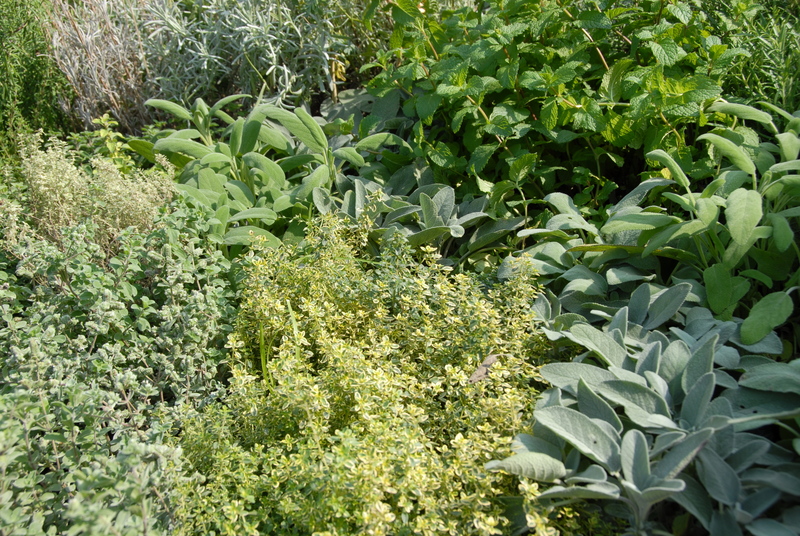Rediscovering Your Green Space: Starting a Garden Revival
Posted on 19/09/2025
Rediscovering Your Green Space: Starting a Garden Revival
Is your backyard looking a little weary or uninspired lately? Perhaps your planters are overrun with weeds, or your once vibrant flower beds have lost their charm. In today's fast-paced world, it's easy to neglect our green spaces. However, rediscovering your garden can do wonders for your home's curb appeal, your well-being, and even your social life. This comprehensive guide will walk you through the rejuvenation process, providing practical tips and inspiring ideas to kick-start a garden revival. Ready to roll up your sleeves and transform that outdoor patch into a thriving oasis? Let's dig in!
Why Prioritize a Garden Revival?
Many homeowners overlook the importance of maintaining a vibrant garden. Yet, reviving your green space goes far beyond boosting aesthetics. Here are some compelling reasons you should consider starting your own garden rejuvenation project:
- Enhances Property Value: A well-maintained garden adds significant value to your home, attracting potential buyers and leaving lasting first impressions.
- Improves Mental Health: Spending time outdoors, nurturing plants, and breathing in fresh air is linked to reduced stress, increased happiness, and mindfulness.
- Encourages Sustainability: By cultivating your own green space, you contribute to local biodiversity and potentially reduce your carbon footprint.
- Promotes Social Gatherings: Beautiful gardens offer a welcoming space for friends and family to gather, fostering stronger connections.
- Boosts Creativity and Learning: Gardening offers hands-on opportunities to learn about ecology, plant care, and creative design.

Assessing Your Current Garden Space
Before you can revive your garden, you need to evaluate its current state:
- Take a visual inventory - Look at what's growing, what's missing, and what's become overgrown or unhealthy.
- Test the soil quality - Healthy soil is the foundation of every flourishing garden. Use simple test kits or consult your local gardening center.
- Identify microclimates - Take note of sunny, shady, dry, or damp spots within your garden. This will help you choose suitable plants later.
- Map out existing features - Sketch a rough outline of your garden's current elements: trees, paths, flower beds, lawn, or patios.
- List your wishlist - Write down what you'd love to see: a vegetable patch, a flower border, a space for entertaining, etc.
Identifying Trouble Spots
Walk through your green space with a critical eye. Look for:
- Bare patches in the lawn that need reseeding.
- Unkempt hedges or shrubs crowding out sunlight.
- Dead branches or trees that could be hazardous.
- Overgrown paths or borders that need defining.
- Areas prone to waterlogging or drought.
Setting Clear, Attainable Revival Goals
Make your garden transformation achievable by breaking it into manageable goals:
- Quick wins: Clearing debris, pruning obvious overgrowth, tidying paths.
- Medium-term projects: Revamping borders, replacing tired plants, updating furniture.
- Long-term visions: Redesigning layouts, installing water features, or creating wildlife habitats.
Tip: Set a realistic budget and timeline for each phase of your garden revival.
Garden Revival Basics: Planning and Preparation
Research and Inspiration
Before you start digging, get inspired! Search for ideas in gardening books, blogs, social media, or local botanical gardens. Consider:
- Garden styles: English cottage, Japanese zen, Mediterranean, wildlife-friendly, or modern minimalist.
- Color schemes and plant combinations that work for your climate.
- Space-saving solutions like vertical gardening or container planting.
Preparing the Ground
- Clear away deadwood and clutter: This gives you a blank canvas to work with.
- Weed thoroughly and remove invasive species.
- Add organic matter like compost to rejuvenate soil health and fertility.
- Fix structural issues: repair broken fences, restore damaged garden beds, or level uneven ground.
Designing Your Green Space Revival
Sketch your dream garden on paper, making sure to factor in:
- Pathways and access to every part of the garden.
- Zones for relaxing, entertaining, growing food, or creating wildlife habitats.
- Height, texture, and color balance for year-round interest.
- Low-maintenance features if you're short on time.
Choosing Plants and Features for a Lasting Revival
Right Plant, Right Place
Selecting suitable plants is crucial for an enduring garden renewal:
- Research which native plants thrive in your region. They require less maintenance and support local wildlife.
- Balance perennials (come back every year) with annuals (add seasonal color).
- Match the right plants to the right light and soil conditions--shade-loving plants for shady spots, drought-tolerant species for sunnier, dry spots, etc.
- Consider edible additions such as herbs, vegetables, or berries for a productive touch.
Exciting Features to Revitalize Your Outdoor Space
- Wildlife habitats: Add birdbaths, bee hotels, native wildflowers, or log piles.
- Water features: A simple pond or fountain can become a striking focal point.
- Garden structures: Pergolas, arbours, swing seats, or garden sheds.
- Lighting: Solar lights or fairy lights extend enjoyment into the evening.
- Compost bins or rain barrels to encourage sustainability.
- Raised beds for easier planting and maintenance.
Practical Steps for a Successful Garden Revival
Step-by-Step Process
-
Clear the Slate
Remove clutter, dead plants, and old decorations. Prune away overgrown branches and shape unruly shrubs. -
Improve Soil Health
Turn over beds, add compost, and mulch to lock in moisture and nutrients. Conduct a soil test and amend as necessary (add lime or sulfur to correct pH, etc.). -
Divide and Replant
Move or divide overcrowded perennials for better growth and visual balance. -
Define Borders and Paths
Use edging materials, gravel, or bricks to outline pathways and beds, keeping the area tidy and structured. -
Plant in Layers
Mimic natural landscapes by planting taller shrubs or trees at the back, mid-height plants in the middle, and low groundcovers or flowers at the front. -
Add Decorative Elements
Refresh garden furniture, add sculptures, or hang wind chimes for extra personality. -
Finish with Mulch
Apply mulch around plants to suppress weeds, retain moisture, and deliver a polished appearance.
Smart Maintenance Tips
- Set a regular schedule for weeding, watering, and pruning.
- Fertilize seasonally based on plant needs and soil test results.
- Keep an eye out for pests and disease--organic solutions are often best for revived eco-friendly gardens.
- Rotate crops in vegetable patches to maintain soil health.
- Continue adding compost and mulch annually to nourish your green space revival.
Inspiring Ideas for Every Green Space
Small Gardens & Urban Spaces
- Try vertical gardening on fences or walls.
- Use containers and raised beds for flexibility.
- Incorporate mirrors or reflective surfaces to give the illusion of space.
Family-Friendly Garden Makeovers
- Designate a play area with soft grass or a sandpit.
- Grow sunflowers or pumpkins for fun, visual appeal.
- Create sensory gardens with fragrant herbs, textured plants, and edible flowers.
Wildlife-Friendly Revival Ideas
- Let a corner grow wild or plant a mini-meadow.
- Install insect hotels and native shrubs.
- Use water sources like small ponds or birdbaths to attract birds and amphibians.
Gardening for Sustainability and Wellbeing
More than a physical transformation, reviving your garden can reconnect you with nature and cultivate a sense of purpose.
- Grow your own food for healthier, fresher meals and zero food miles.
- Install composting systems to recycle organic waste.
- Use rainwater harvesting and drought-tolerant planting to save water.
- Choose pollinator-friendly flowers and minimize pesticide use for a thriving eco-system.
- Consider planting trees or shrubs that provide year-round interest and shelter for wildlife.
Studies show that regularly tending to a garden can improve mood, reduce anxiety, and even lower blood pressure. Making time for your green space revival is an investment in both your home and your holistic wellbeing.

Overcoming Common Challenges When Reviving Gardens
Dealing with Poor Soil
It's common for older or neglected gardens to suffer from depleted or compacted soil. Combat this issue by:
- Incorporating organic matter--compost, manure, leaf mold.
- Avoiding chemicals that can harm soil life.
- Using cover crops (green manure) in fallow beds to boost fertility naturally.
Managing Persistent Weeds
- Pull weeds by hand before they set seed.
- Lay down thick mulch or weed barriers to smother trouble spots.
- Edge borders to prevent grass and invasive plants from sneaking in.
Keeping Up Motivation
- Set small milestones and celebrate progress.
- Take before and after photos to track your garden revival journey.
- Join local gardening clubs or online forums for support and fresh ideas.
- Involve family and friends for shared success.
Conclusion: Embrace Your Green Revival
Rediscovering your green space is a deeply rewarding process that transforms more than just the soil beneath your feet. It reengages your senses, revitalizes your home, and nurtures a stronger bond with nature. Whether you're a beginner or seasoned gardener, following a thoughtful plan ensures your garden revival is as sustainable as it is stunning.
Remember, even small changes can spark a dramatic transformation. Begin with the basics of garden renewal: clear and prepare the space, plan carefully, and choose resilient plants and features that match your vision. With time, patience, and a little creativity, your green space will flourish anew--ready to be enjoyed for years to come.
Looking to start your own garden revival project? Share your progress and favorite tips below. Let's rejuvenate our gardens and rediscover the joy of outdoor living--one seedling at a time!

